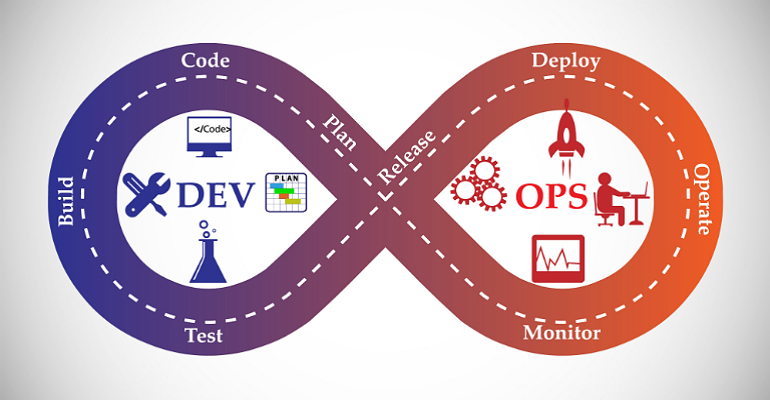Most companies worldwide are either actively using DevOps methodology already, or are looking for ways to implement these practices into their software delivery routines. Why is it so? We explain what is DevOps and why doing it is so beneficial for any company involved, and we will start with DevOps definition.
DevOps is a practical implementation of Agile software development methodology. It is an approach to software development and IT infrastructure management that emphasizes full-scale automation of various aspects of IT operations to ensure minimal effort is spent on routine tasks, while the product is kept operational at all times and new features are delivered on a predictable schedule.
The main DevOps meaning is that instead of constantly doing the same tasks again and again using scripted commands, the software engineers automate most of their routine workflows using specialized tools like Terraform Kubernetes, Ansible, Jenkins, ELK stack, Sumologic, Splunk and Datadog, Prometheus+Grafana, etc.

By definition DevOps is centered around 3 main paradigms: IaC, CI, CD. We will explain them in more details below.
- IaC stands for Infrastructure as Code. This means that instead of provisioning, configuring and managing each physical server individually, the whole IT infrastructure is virtualized and managed through easily configurable Terraform manifests.
Each required infrastructure state is described in simple declarative language, so that the Ops engineers just choose the state they need and Terraform spins up the whole clusters of servers with preconfigured operating systems and all the runtime environment needed for your development or operations goals.
This excludes the so-called “configuration drift”, where various servers have different versions of software installed. Instead, the whole virtual worlds are created, used and dismantled with a couple of commands, leaving no room for human error or possible security backdoors. - CI stands for Continuous Integration. It is a practice of developing the code in smaller batches and merging their branches into the main project trunk regularly, every day or even more frequently. This way the codebase remains uniformed and fewer bugs make it through the testing. This requires in-depth automated unit testing using multiple scenarios and multiple testing environments — that is where IaC comes in handy. CI is done using DevOps tools like CircleCI, Gitlab CI and Jenkins to automate all infrastructure operations required to support the software delivery process.
- CD stands for Continuous Delivery. This is a DevOps practice of configuring multiple tools to work automatically, so that the amount of human effort involved in routine operations is minimal. Using Ansible, Jenkins, CircleCI and custom commands for building autonomous software delivery pipelines ensures each code commit essentially becomes a release if it passes the automated unit tests.
Conclusions: what is DevOps?
We hope our explanation helped you understand what does DevOps mean. In short, it is an approach to software delivery and IT infrastructure management centered at automation of various aspects of IT operations. Any decent DevOps company can provide DevOps-as-a-service to configure the required processes and workflows for you. Should you want to build a DevOps team yourself, however — this would be a whole other task, the one we maybe describe later. Till then — you can define DevOps meaning and usefulness for yourself!

